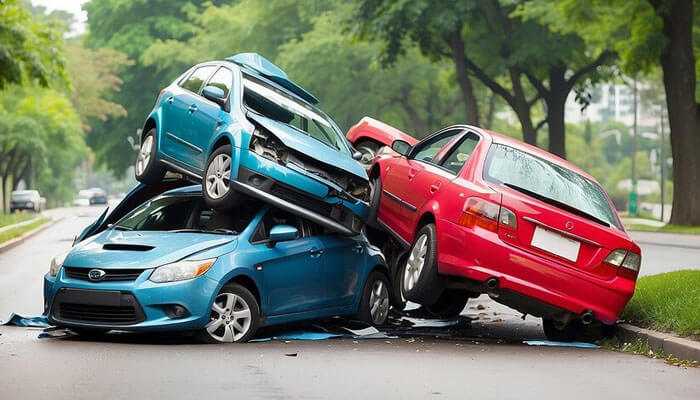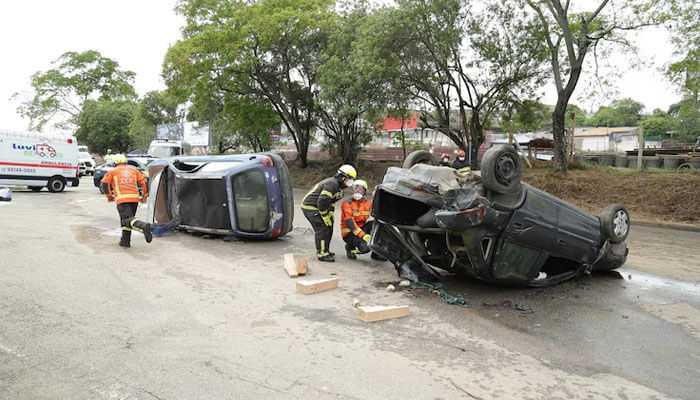In the chaotic aftermath of a multi-vehicle car accident, the quest for legal accountability can seem like navigating through a maze. With multiple vehicles, diverse factors, and varying degrees of fault, unraveling liability becomes a complex endeavor. The blog delves into the intricacies of legal accountability in multi-vehicle car accidents, shedding light on the factors, challenges, and implications involved.
Dynamics of Multi-Vehicle Car Accidents:
Multi-vehicle car accidents, also known as chain reaction collisions, occur when three or more vehicles are involved in a crash. These accidents can range from minor collisions to massive pile-ups, causing injuries, fatalities, and extensive property damage. Understanding the dynamics of multi-vehicle accidents is crucial for comprehending the complexities of determining liability in such scenarios.
As explained by Harris Personal Injury Lawyers, in multi-vehicle accidents, the sequence of events leading to the collision is often convoluted, involving multiple impacts and contributing factors. Factors such as driver negligence, adverse weather conditions, road hazards, and mechanical failures can all play a role in causing or exacerbating the accident. Additionally, the speed and force of impact in multi-vehicle collisions can amplify the severity of injuries and damages, further complicating the legal aftermath.
The Legal Framework of Liability:
Liability in multi-vehicle accidents is determined based on principles of negligence, which require proving that a party breached their duty of care, resulting in harm to others. However, assigning fault in multi-vehicle accidents is inherently complex due to the involvement of multiple parties and factors. Determining liability often requires a thorough investigation, including gathering evidence, reconstructing the accident, and analyzing witness statements.
Moreover, liability in multi-vehicle accidents may be shared among multiple parties, each bearing varying degrees of fault. Comparative negligence laws, which apportion liability based on each party’s degree of fault, further complicate the legal landscape. As a result, navigating the legal framework of liability in multi-vehicle accidents requires expertise and diligence to ensure that all responsible parties are held accountable for their actions.
By partnering with knowledgeable attorneys who specialize in multi-vehicle accidents, victims can navigate the complexities of the legal framework with confidence and clarity. These legal professionals provide invaluable support and advocacy, empowering victims to seek accountability for the harm they have suffered and rebuild their lives in the aftermath of a devastating accident.
Challenges in Establishing Liability:
Establishing liability in multi-vehicle accidents poses several challenges, including determining causation, assessing fault, and resolving conflicting accounts of the accident. Factors such as driver distraction, poor road conditions, and limited visibility can complicate the investigation and cloud the determination of fault. Additionally, insurance companies may dispute liability or attempt to minimize their payout, further complicating the legal process for victims seeking compensation.
Furthermore, the sheer complexity of multi-vehicle accidents can overwhelm victims and their families, making it challenging to navigate the legal system effectively. Seeking guidance from experienced legal professionals is crucial in overcoming these challenges and advocating for the rights of accident victims. By understanding the intricacies of liability in multi-vehicle accidents, victims can pursue fair compensation for their injuries and damages with confidence and clarity.
Legal experts specializing in multi-vehicle accidents have the knowledge, resources, and experience to navigate the complexities of liability determination and pursue justice on behalf of their clients. By entrusting their case to skilled attorneys, victims can focus on their recovery while their legal team fights tirelessly to uphold their rights and secure fair compensation.
Legal Recourse for Victims:
Victims of multi-vehicle accidents have legal recourse to seek compensation for their injuries and losses. This typically involves filing a personal injury claim against the at-fault parties responsible for the accident. In these claims, victims must demonstrate that the defendant’s negligence directly caused their injuries and that they have suffered measurable damages as a result. Additionally, victims may be entitled to various types of compensation, including medical expenses, lost wages, pain and suffering, and property damage.
According to Maier Gutierrez & Associates, consulting with experienced personal injury attorneys is essential for victims to understand their rights, navigate the legal process, and pursue maximum compensation for their losses. Attorneys can assess the circumstances of the accident, gather evidence, negotiate with insurance companies, and represent victims in court if necessary. By enlisting the support of skilled legal professionals, victims can assert their rights and secure the compensation they deserve for their injuries and damages.
Conclusion:
In the labyrinth of multi-vehicle car accidents, understanding liability is essential for achieving justice and holding responsible parties accountable for their actions. By unraveling the complexities of legal accountability, victims can navigate the legal maze with confidence and clarity, ensuring that their rights are protected and their voices are heard. Although the road to recovery may be fraught with challenges, with the guidance of experienced legal professionals, victims can emerge from the wreckage with the compensation they need to rebuild their lives.
Moreover, beyond the individual cases, addressing the complexities of multi-vehicle accidents has broader implications for road safety and accident prevention. By promoting awareness, implementing safety measures, and enforcing accountability, stakeholders can work together to reduce the incidence of multi-vehicle accidents and minimize their impact on society. Through collaboration and advocacy, we can create safer roads for everyone, where accidents are less frequent, and victims receive the support they need to heal and move forward.



